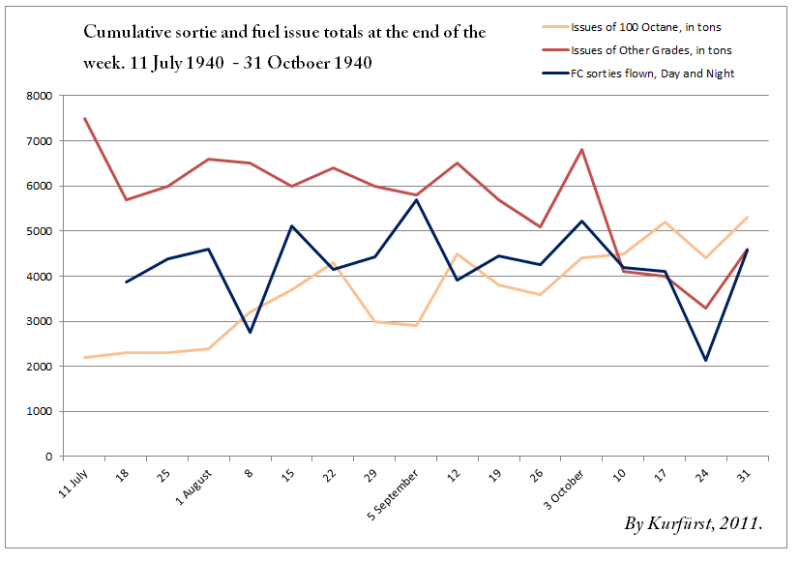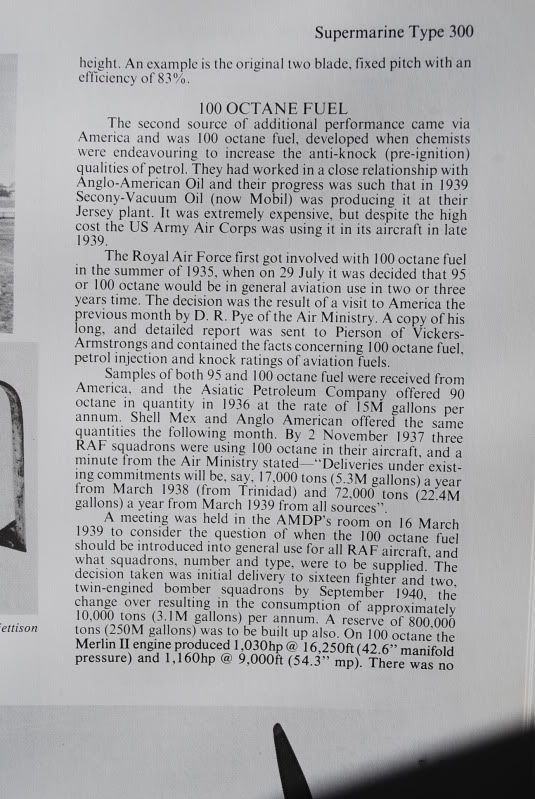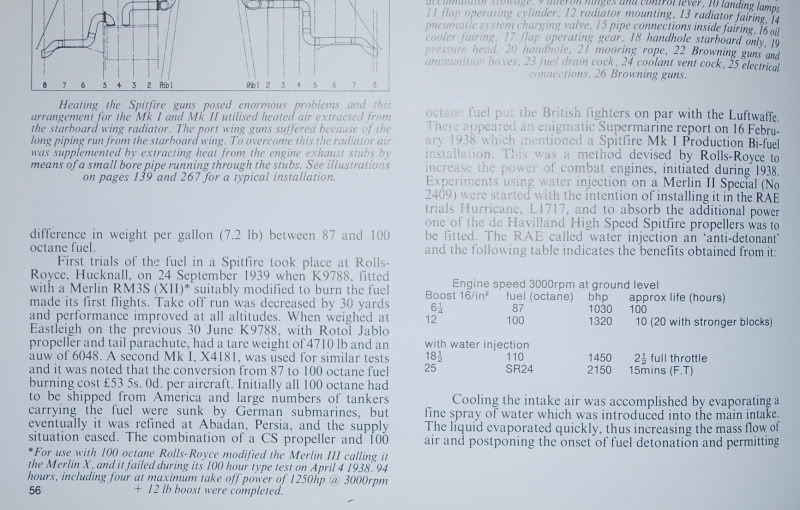
 |
|
#121
|
|||
|
|||
|
If I can address the question of the number of Blenheim squadrons which were stocked with 100 octane.
Kurfurst had until the last few days said that there were only two squadrons and asked me to supply my evidence. The following papers which he has seen before and quoted on recently make it clear that the four stations are the only stations to be fully fuelled with 100 octane. The paper makes it clear that these are the exception and that the norm must be to retain one tank of 87 octane for aircraft that are passing through. Note 1 - all Blenheim units are to be equipped with 100 octane Note 2 - only the four specified bases are to be only equipped with 100 octane Note 3 - the 87 octane is for aircraft passing through not non operational flying If anyone wants any additional information please let me know |
|
#122
|
||||
|
||||
|
Quote:
__________________
 i7 7700K 4.8GHz, 32GB Ram 3GHz, MSI GTX 1070 8GB, 27' 1920x1080, W10/64, TrackIR 4Pro, G940 Cliffs of Dover Bugtracker site: share and vote issues here |
|
#123
|
|||
|
|||
|
Save n Zoom?
|
|
#124
|
||||
|
||||
|
the 300 pixel wide text part will not be more detailed, just bigger
The native language of who is English, read it more easily sure...
__________________
 i7 7700K 4.8GHz, 32GB Ram 3GHz, MSI GTX 1070 8GB, 27' 1920x1080, W10/64, TrackIR 4Pro, G940 Cliffs of Dover Bugtracker site: share and vote issues here |
|
#125
|
|||
|
|||
|
It is a dreadful copy but the following may help
|
|
#126
|
||||
|
||||
|
Thank you, it helps
__________________
 i7 7700K 4.8GHz, 32GB Ram 3GHz, MSI GTX 1070 8GB, 27' 1920x1080, W10/64, TrackIR 4Pro, G940 Cliffs of Dover Bugtracker site: share and vote issues here |
|
#127
|
|||
|
|||
|
Quote:
Quote:
The most interesting part is that "Pips" found this well before, in 2004 or earlier, and it agrees with every single document Neil managed to dig up afterwards, though Neil and now Glider tries to discredit this research with whatever means, basically calling Pips a liar behind his back at every opportunity, but never to his face.. The problem is, if Pip would have made it up, he was extremely talented, because Pips information from 2004 - for example that the large scale fighter conversion begun in late September 1940 - agrees perfectly with what Neil found in British archives in 2009 about 87 vs 100 octane consumption rates (and then waited two years before publishing it, as it was obviously not very helpful to his own thesis). Note that as per the consumption figures, 100 octane did not become the main fuel until late September 1940, just like Pips stated, 7 years ago. 
__________________
Il-2Bugtracker: Feature #200: Missing 100 octane subtypes of Bf 109E and Bf 110C http://www.il2bugtracker.com/issues/200 Il-2Bugtracker: Bug #415: Spitfire Mk I, Ia, and Mk II: Stability and Control http://www.il2bugtracker.com/issues/415 Kurfürst - Your resource site on Bf 109 performance! http://kurfurst.org 
Last edited by Kurfürst; 06-17-2011 at 04:14 PM. |
|
#128
|
|||
|
|||
|
[QUOTE=Glider;298446]Kurfurst had until the last few days said that there were only two squadrons and asked me to supply my evidence.
Stop making things up and putting into other's mouths. As others have noted, it makes you look petty, petulant, and juvenile. Its the lowest form of arguement, when you have nothing worthwhile to offer. The paper does not say that. You have made it up. Quote:
__________________
Il-2Bugtracker: Feature #200: Missing 100 octane subtypes of Bf 109E and Bf 110C http://www.il2bugtracker.com/issues/200 Il-2Bugtracker: Bug #415: Spitfire Mk I, Ia, and Mk II: Stability and Control http://www.il2bugtracker.com/issues/415 Kurfürst - Your resource site on Bf 109 performance! http://kurfurst.org 
|
|
#129
|
|||
|
|||
|
Here's what the best Spitfire book (Morgan/Shacklady: Spitfire, the History), by far, has to say on the question.
Take note that it very well mentions the supply problems with the import of 100 octane from overseas, and also take note Glider is very well aware of this work, having shown this several times. Instead, he sells a story about 'hundreds' of books not mentioning a thing.. The relative lifespan of the engine (10-20 hours on +12 lbs vs 100 hours on +6 1/4 lbs) is also of interest.  
__________________
Il-2Bugtracker: Feature #200: Missing 100 octane subtypes of Bf 109E and Bf 110C http://www.il2bugtracker.com/issues/200 Il-2Bugtracker: Bug #415: Spitfire Mk I, Ia, and Mk II: Stability and Control http://www.il2bugtracker.com/issues/415 Kurfürst - Your resource site on Bf 109 performance! http://kurfurst.org 
|
|
#130
|
||||
|
||||
|
Quote:
In fact the first scan states quite clearly that the decision to eliminate their holdings of DTD230 should not be taken as a precedent, so to me this is in fact quite compelling evidence that the RAF had not converted all its aircraft to 100 octane (at least in April of 1940 when the document is dated). Last edited by CaptainDoggles; 06-17-2011 at 05:30 PM. |
 |
|
|